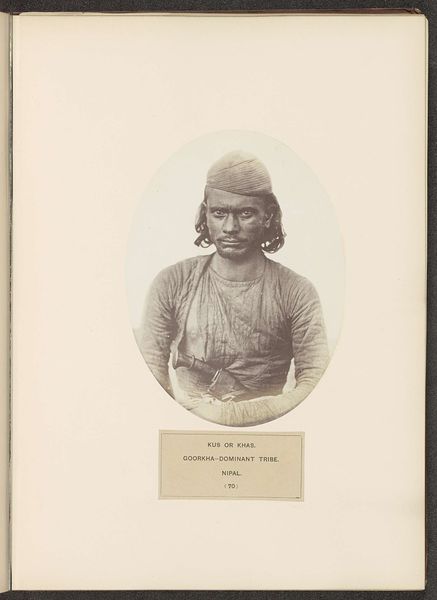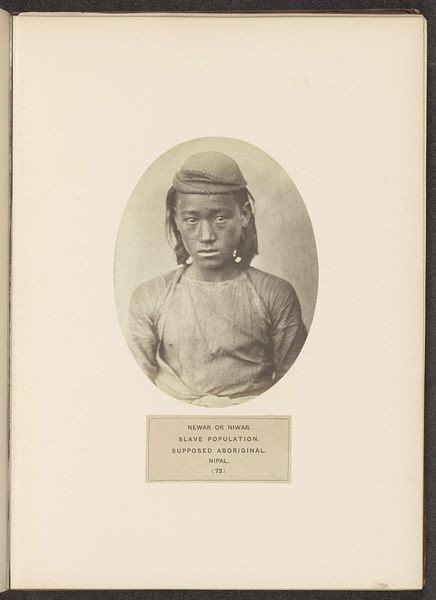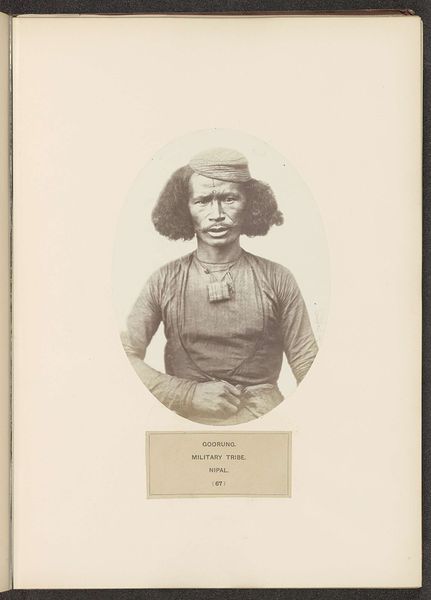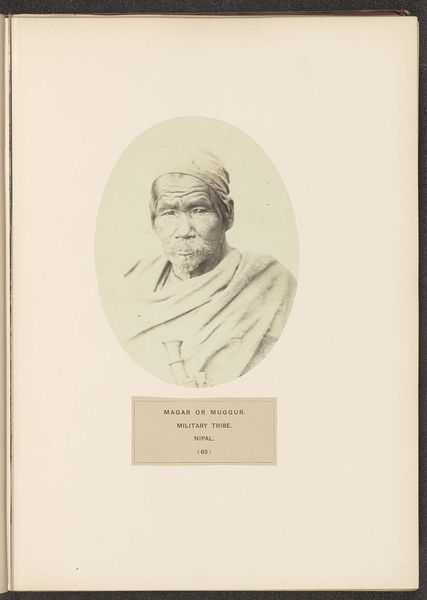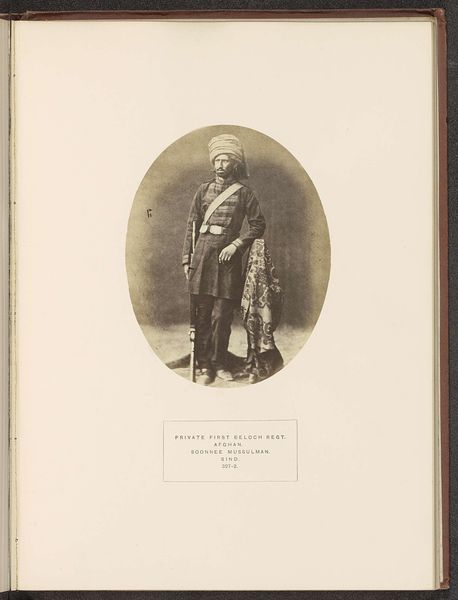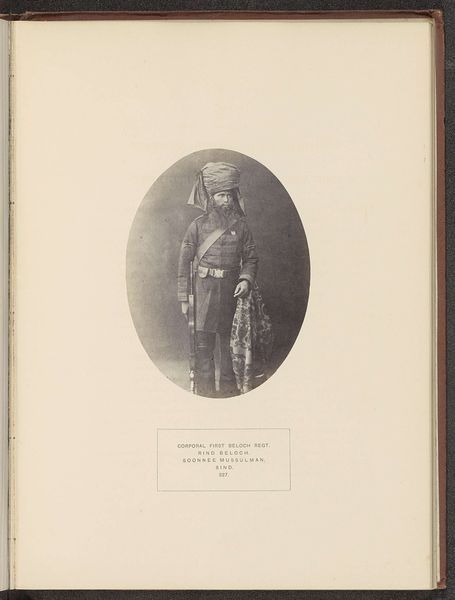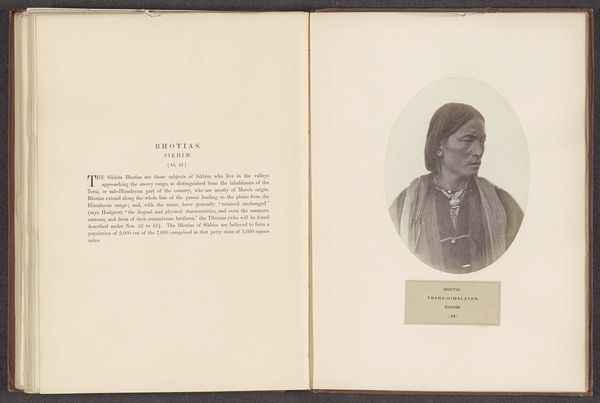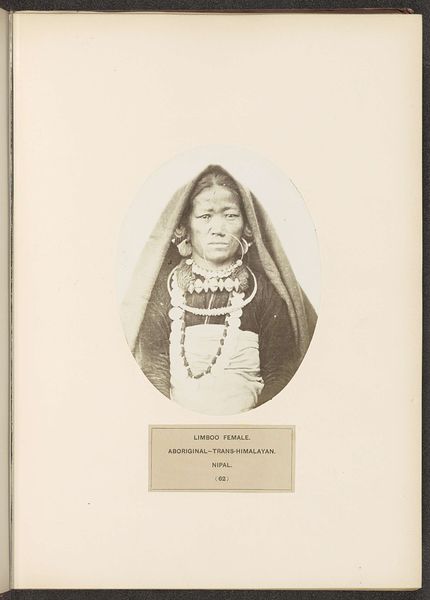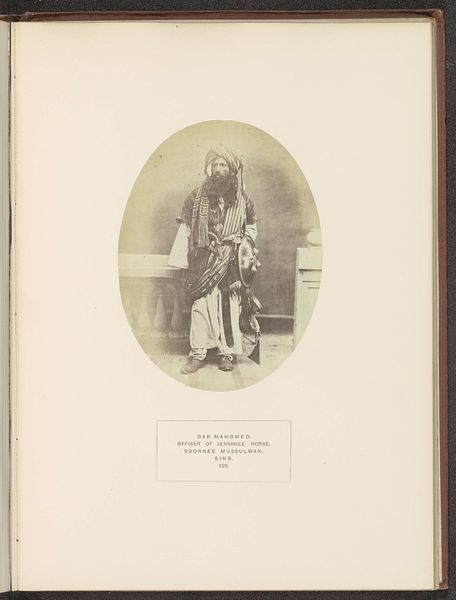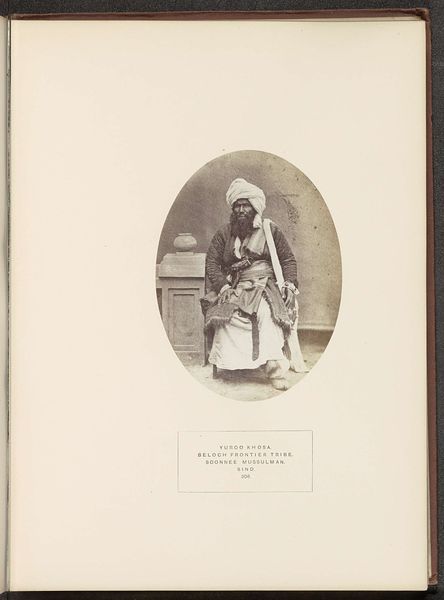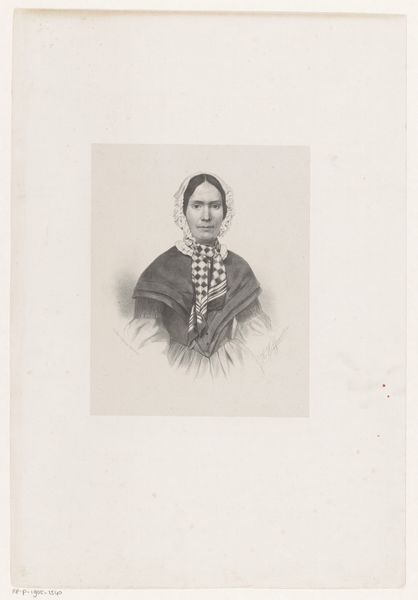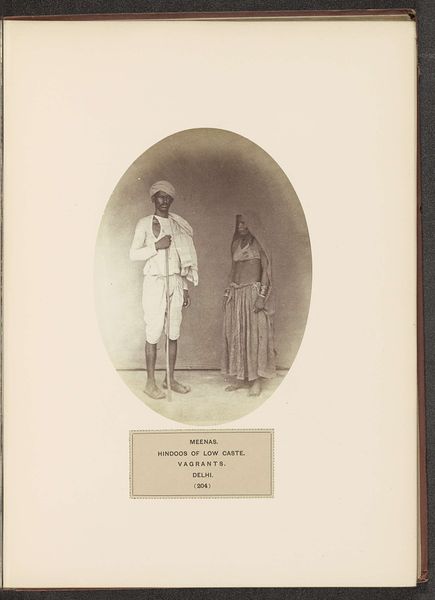
photography
#
portrait
#
asian-art
#
photography
Dimensions: height 175 mm, width 129 mm
Copyright: Rijks Museum: Open Domain
Curator: Before us is a photographic portrait entitled "Portret van een onbekende Moormi man uit Nepal," attributed to Benjamin Simpson, and dated before 1868. Editor: There's an immediacy to it; the subject's gaze seems so direct. It's rendered with such incredible detail for a photo of that age; the texture of his clothing and head covering stands out. Curator: Let's consider the conditions under which such an image would have been produced. Nepal was largely closed off to outsiders at this time. What sort of resources and permissions were required for Simpson to create this image and circulate it, possibly as part of a larger ethnological project? And to what use would these images have been put? Editor: The composition strikes me first. The oval frame containing the portrait within the rectangular page creates a focus, highlighting the face and shoulders, really drawing the viewer into an intimate, though mediated, encounter with the subject. Curator: But that "intimacy" is also complicated. The image, created through a mechanical, photographic process, served, at least in part, to create visual records for imperial purposes. It represents not just a man, but also a type: "Moomis. Tibetans." It is a representation that serves political functions beyond just aesthetic representation. Editor: Indeed, the text included with the image provides an additional layer of analysis. But focusing on form, the tonal range achieved in early photography always impresses me, especially here, where gradations of light and shadow define the planes of the face, capturing the individual's unique bone structure. Curator: Consider also how Simpson managed the subject: this man may not have had much, if any, say over the process or the subsequent deployment of this image. This labor – his posing, the photographer's arranging the sitting – and how it participated in systems of knowledge production. Editor: Well, the interplay of light, texture, and shadow imbues the image with a tangible sense of depth, really adding a contemplative layer. Curator: Thank you for these formal insights, with these kinds of early portraits, it is essential we understand both the artistic construction, and social situation in which the image came into being.
Comments
No comments
Be the first to comment and join the conversation on the ultimate creative platform.
